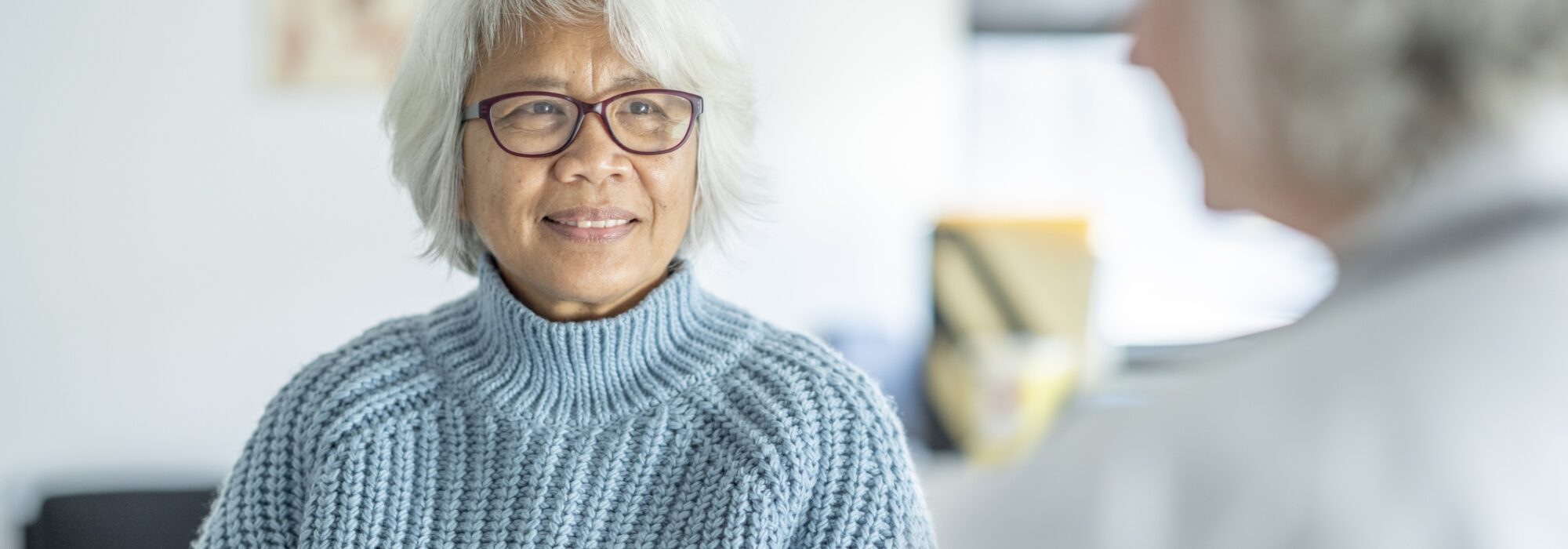
Diabetes and hearing loss: 3 things clinicians should know
Did you know that hearing loss is nearly twice as prevalent in patients with type 2 diabetes? Researchers, Drs. Emily Urry and Elizabeth Stewart, share research findings looking at the relationship between diabetes and hearing loss.
The Centers for Disease Control and Prevention (CDC) states that hearing loss is the third most common chronic physical condition in the U.S. and emphasize that it is “twice as prevalent as diabetes.”1 Interestingly, the American Diabetes Association (ADA) recently recognized diabetes as a risk factor for hearing loss.2
Diabetes mellitus is a chronic metabolic disease that occurs when the body can’t produce enough insulin or can’t appropriately use the insulin it does produce; this results in a constantly elevated level of glucose in the blood. As of 2021, ~537 million (or about 1 in 10) adults worldwide were living with diabetes, with type 2 diabetes mellitus (T2DM) accounting for over 90% of cases.
Diabetes can damage many of the body’s organs leading to serious complications such as cardiovascular diseases, as well as nerve, kidney, and eye damage.3
3 things research tells us about diabetes and hearing loss
- Hearing loss is more prevalent in those with T2DM – Clinical research suggests that hearing loss is more prevalent among adults with T2DM. For example, the authors of a systematic review of relevant literature analyzed the findings of 18 studies that examined the incidence of hearing loss in adults with and without a diagnosis of T2DM.4 Results revealed that the incidence of hearing loss in the group with diabetes was nearly twice as high as in the non-diabetic control group.*
- Age-related hearing loss might show up earlier in those with T2DM – A closer look at the differences in hearing thresholds between groups with and without T2DM revealed that hearing loss was, on average, mild in degree (25-39 dB HL) and tended to be more pronounced in the high frequencies (4-8kHz).4-7
Because this pattern is consistent with the presentation of age-related hearing loss, these results suggest that diabetes may speed up the progression of age-related hearing loss, or even induce an earlier-than-usual onset.4 - T2DM might impair functioning of the inner ear – The causal mechanisms underlying the association between diabetes and hearing loss are still under debate. However, research in humans and animals suggests that diabetes, which damages other parts of the body (e.g., eyes, kidneys) via small blood vessel and nerve dysfunction, may similarly impair functioning of the inner ear.8
For example, evidence from at least one human temporal bone study revealed significant thickening of the walls of cochlear blood vessels, as well as atrophy of the stria vascularis and outer hair cell loss – all of which may result in or contribute to hearing impairment – in individuals with T2DM compared to non-diabetic controls.9
Clinical implications for audiologists
In adults aged 65 or older, a core patient population in hearing care, an estimated 33% have diabetes.10 Hearing care professionals should be aware that diabetes increases the risk of developing hearing loss and inquire after any changes to their patients’ health (e.g. diabetes status) and medication intake.
* Background to the study
Regarding methodology of this systematic literature review (SLR), Akinpelu and colleagues carefully selected previously published studies examining the effects of T2DM on hearing function, using pre-determined criteria, such as the inclusion of studies in which hearing status was measured objectively (as opposed to self-reported), and the exclusion of studies that considered both type 1 and type 2 DM.
The 18 articles that fulfilled these criteria were then subjected to a meta-analysis (MA), which allows for cohesive statistical analysis across multiple independent studies investigating a common research question. Together, these approaches (SLR, MA) are considered the strongest source of evidence in scientific literature.
The main result of the study was obtained by calculating an odds ratio (OR), which is a way to quantify the relationship between a variable (here, presence/absence of diabetes) and the likelihood of a particular outcome (in this case, hearing loss). The overall OR (pooled across the 18 included studies) was 1.91. What this means is that if, for example, 100 out of a group of adults without T2DM have hearing loss, we would expect that, out of an equal-sized group of adults with T2DM, 191 would have hearing loss.
To learn more on this topic, we invite you to read visit the following:
Diabetes and Hearing Loss | ADA
International Diabetes Federation – Home (idf.org)
We invite you to read a previous blog article, When we change the conversation, we change perceptions.
References:
1. U.S. Department of Health & Human Services. (2018, December 11). Statistics about the Public Health Burden of Noise-Induced Hearing Loss. Centers for Disease Control and Prevention. Retrieved December 6, 2022, from https://www.cdc.gov/nceh/hearing_loss/public_health_scientific_info.html
2. Draznin, B., Aroda, V. R., Bakris, G., Benson, G., Brown, F. M., Freeman, R., … & Kosiborod, M. (2022). 4. Comprehensive Medical Evaluation and Assessment of Comorbidities: Standards of Medical Care in Diabetes-2022. Diabetes Care, 45(Suppl 1), S46-S59. https://doi.org/10.2337/dc22-S004
3. International Diabetes Federation (IDF). 2021. IDF Diabetes Atlas (10th ed.). https://diabetesatlas.org/atlas/tenth-edition/
4. Akinpelu, O. V., Mujica-Mota, M., & Daniel, S. J. (2014). Is type 2 diabetes mellitus associated with alterations in hearing? A systematic review and meta-analysis. Laryngoscope, 124(3), 767-776. https://doi.org/10.1002/lary.24354
5. Li, J., Zhang, Y., Fu, X., Bi, J., Li, Y., Liu, B., & Zhang, L. (2018). Alteration of auditory function in type 2 diabetic and pre-diabetic patients. Acta Otolaryngol, 138(6), 542-547. https://doi.org/10.1080/00016489.2017.1422084
6. Ren, H., Wang, Z., Mao, Z., Zhang, P., Wang, C., Liu, A., & Yuan, G. (2017). Hearing Loss in Type 2 Diabetes in Association with Diabetic Neuropathy. Arch Med Res, 48(7), 631-637. https://doi.org/10.1016/j.arcmed.2018.02.001
7. Ren, J., Ma, F., Zhou, Y., Xu, A., Zhang, J., Ma, R., & Xiao, X. (2018). Hearing impairment in type 2 diabetics and patients with early diabetic nephropathy. J Diabetes Complications, 32(6), 575-579. https://doi.org/10.1016/j.jdiacomp.2018.03.014
8. Samocha-Bonet, D., Wu, B., & Ryugo, D. K. (2021). Diabetes mellitus and hearing loss: A review. Ageing Res Rev, 71, 101423. https://doi.org/10.1016/j.arr.2021.101423
9. Fukushima, H., Cureoglu, S., Schachern, P. A., Paparella, M. M., Harada, T., & Oktay, M. F. (2006). Effects of type 2 diabetes mellitus on cochlear structure in humans. Arch Otolaryngol Head Neck Surg, 132(9), 934-938. https://doi.org/10.1001/archotol.132.9.934
10. Endocrine Society. (2022, January). Diabetes and older adults. Retrieved 7 November, 2022, from https://www.endocrine.org/patient-engagement/endocrine-library/diabetes-and-older-adults
Authors

Elizabeth Stewart, Research Audiologist at the Phonak Audiology Research Center
Elizabeth joined Sonova in 2017 as a Research Audiologist in the Phonak Audiology Research Center. Her educational background includes a Doctorate of Audiology from the University of Kansas Medical Center and a PhD in Speech and Hearing Science from Arizona State University. She currently manages various external research collaborations and supports systematic literature searches and related background research activities relevant to Phonak products as well as Thought Leadership initiatives.

Emily Urry, Senior Manager Digital Health Innovation at Sonova
Emily is an experienced clinical health scientist whose work focuses on cardio-metabolic health promotion via health behavior change. At Sonova, she runs a program that explores the health challenges of people with hearing loss and ways to address said challenges. This knowledge is then embedded in Sonova’s hearing health solutions and holistic hearing healthcare approach. Emily holds a PhD in Health Sciences and Technology from the ETH Zurich (Switzerland).
